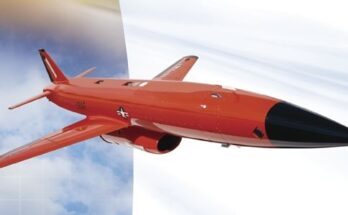The U.S. Navy announced on February 28 that the aircraft carrier variant of the Joint Strike Fighter, the F-35C Lightning II, met all requirements and had achieved Initial Operational Capability (IOC). The milestone follows the first F-35C squadron’s completion of aircraft carrier qualifications aboard USS Carl Vinson (CVN 70).
In order to declare IOC, the first operational squadron must be properly manned, trained, and equipped to conduct assigned missions in support of fleet operations. This includes having 10 Block 3F F-35C aircraft, requisite spare parts, support equipment, tools, technical publications, training programs and a functional Autonomic Logistic Information System (ALIS).

The F-35C is the final variant of the program to achieve IOC. The Marine Corps F-35B became operational in July 2015, while the Air Force F-35A achieved IOC in August 2016. These dates may create the appearance that the F-35C is lagging behind its counterparts, but that is not the case.
It all comes down to software. During development, each F-35 variant passes through a series of software blocks, with each successive block improving capabilities of the aircraft and ironing out bugs from the previous version.
Like the Navy, the Air Force initially planned for the F-35A to reach IOC under the Block 3F software package. However, the Air Force altered its plans and declared IOC using a less developed Block 3i software. This change allowed the service to accelerate the operational milestone. The F-35B featured Block 2B software when it became operational, similar to the Air Force’s Block 3i package but with less advanced processing hardware. The Navy was the only service to keep the Block 3F requirement in place, accounting for the apparent lag time in achieving IOC.
As editor of International Military Markets, North America, Shaun has cultivated a deep understanding of the vast defense markets in the United States and Canada. Shaun's perspective on defense procurement and budget issues has been cited in a variety of defense periodicals, including Defense News and National Defense Magazine. Further, Shaun played an integral role in the development of Forecast International's U.S. Defense Budget Forecast product, which offers an unprecedented level of insight into the Pentagon's acquisition budget. In addition to providing original analytical content for the U.S. Defense Budget Forecast, Shaun oversees an internal defense budget forecasting process involving Forecast International's team of skilled systems analysts following release of the DoD's annual budget request. Shaun is also in charge of managing Forecast International's Weapons Inventory database.




